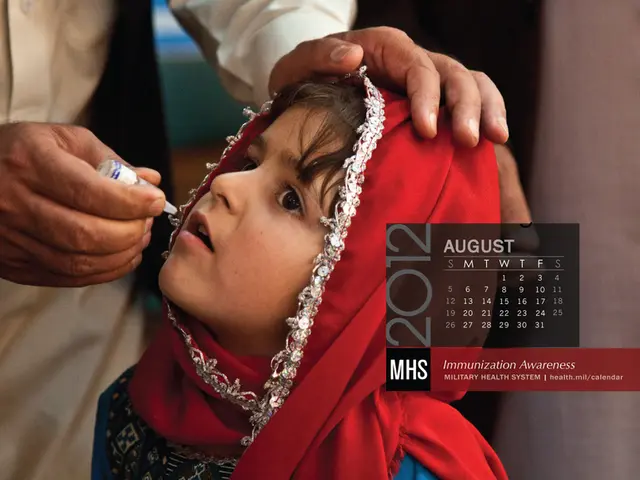Genetic alteration of the BRCA1 gene linked to aggressive breast cancer type, triple-negative
In the world of genetics and oncology, a significant focus has been placed on understanding the BRCA1 gene and its role in breast cancer development. People who inherit a mutation in the BRCA1 gene have a significantly higher lifetime risk of developing breast cancer compared to the general population. This article will delve into the treatment options available for individuals diagnosed with Triple-Negative Breast Cancer (TNBC) who carry the BRCA1 mutation.
BRCA1, an acronym for "BReast CAncer gene 1," plays a crucial role in suppressing cell growth, stopping cells from growing too quickly, and repairing damaged DNA. People with risk factors for BRCA gene mutations, such as females who are of Ashkenazi Jewish descent or have family members with the gene mutation, may qualify for genetic testing.
TNBC is a fast-growing, aggressive form of breast cancer that is more common in people with the BRCA1 mutation. Approximately 15% of all breast cancers are TNBC, making it a significant subtype to address. TNBC does not have estrogen receptors, progesterone receptors, or human epidermal growth factor receptor-2 (HER2), which means that traditional hormone therapies are not effective in treating this type of cancer.
For those diagnosed with TNBC and the BRCA1 mutation, a multimodal approach is often employed.
Chemotherapy remains a primary treatment to shrink tumors before or after surgery and can be combined with immunotherapy to enhance effectiveness.
Immunotherapy with checkpoint inhibitors like atezolizumab or pembrolizumab helps activate the immune system to attack cancer cells and is often used, especially when the tumor expresses the PD-L1 protein.
PARP inhibitors (e.g., olaparib, talazoparib) are targeted therapies particularly effective for BRCA1-mutated TNBC because they prevent cancer cells from repairing damaged DNA, leading to cancer cell death. These are used in advanced or maintenance therapy settings.
Surgery, often combined with chemotherapy, is used to remove the tumor physically and can be performed before or after chemotherapy.
Antibody-drug conjugates like sacituzumab govitecan combine chemotherapy and targeted monoclonal antibodies and are approved for metastatic TNBC.
For BRCA1 mutation carriers, risk-reducing options such as prophylactic bilateral mastectomy can also be considered due to the high risk of breast cancer development.
In the early stages of TNBC, a doctor may perform a lumpectomy and recommend radiation therapy or chemotherapy after surgery if necessary. In stage 4 TNBC, a doctor will recommend standard chemotherapy first, but may also recommend other chemo drugs or PARP inhibitors for people with the BRCA1 mutation and breast cancer that is no longer responding to standard chemotherapy drugs.
For those who have undergone treatment, it is crucial to monitor for signs of recurrence. People should contact a doctor if they experience symptoms of TNBC, including a lump, swelling, pain, skin dimpling, nipple turning inward, thickened or dry skin, redness or color changes, flaking skin, nipple discharge, swollen lymph nodes, or any other unusual changes in their breasts.
For those with the BRCA1 mutation, a doctor may prescribe a targeted drug called olaparib (Lynparza) for 1 year after chemotherapy. TNBC is more likely to return, even with treatment, compared with other forms of breast cancer.
Genetic testing for the BRCA1 mutation involves taking a sample of either saliva or blood. The National Comprehensive Cancer Network recommends genetic testing for people with a blood relative with a known mutation, specific family histories of cancer, or certain disorders that predispose them to cancer.
In conclusion, individuals with BRCA1 mutation and TNBC are often treated with a multimodal approach: chemotherapy (sometimes combined with immunotherapy), PARP inhibitors tailored to their genetic mutation, surgery, and newer targeted therapies such as antibody-drug conjugates, with preventive surgery as an option for risk reduction. It is essential for those at risk or diagnosed with TNBC to consult with their healthcare provider to determine the best course of treatment.
- BRCA1, a critical gene in breast cancer development, is essential for suppressing cell growth and repairing DNA.
- People with risk factors for BRCA gene mutations, such as females of Ashkenazi Jewish descent, may qualify for genetic testing.
- Triple-Negative Breast Cancer (TNBC), which is more common in people with the BRCA1 mutation, does not respond to traditional hormone therapies.
- Chemotherapy remains a primary treatment for TNBC, often combined with immunotherapy or targeted therapies like PARP inhibitors.
- Immunotherapy with checkpoint inhibitors and PARP inhibitors can enhance the immune system's attack on cancer cells and prevent DNA repair in TNBC cells, respectively.
- Risk-reducing options, such as prophylactic bilateral mastectomy, are also considered for BRCA1 mutation carriers due to their high risk of breast cancer development.
- For those diagnosed with TNBC, monitoring for signs of recurrence is crucial, and symptoms like a lump, swelling, or nipple discharge should be reported to a doctor.
- Genetic testing for the BRCA1 mutation involves taking a sample of either saliva or blood and is recommended for people with a family history of the mutation or specific disorders that predispose them to cancer.




